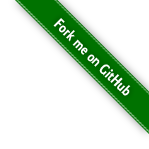towhee.models.layers.sam.SAM¶
- class towhee.models.layers.sam.SAM(params, base_optimizer, rho=0.05, adaptive=False, **kwargs)[source]¶
Bases:
OptimizerSharpness-Aware Minimization that simultaneously minimizes loss value and loss sharpness. In particular, it seeks parameters that lie in neighborhoods having uniformly low loss.
Methods
Add a param group to the
Optimizers param_groups.first_stepLoads the optimizer state.
profile_hook_stepRegister an optimizer step post hook which will be called after optimizer step. It should have the following signature::.
Register an optimizer step pre hook which will be called before optimizer step. It should have the following signature::.
second_stepReturns the state of the optimizer as a
dict.Performs a single optimization step (parameter update).
Sets the gradients of all optimized
torch.Tensors to zero.- __repr__()¶
Return repr(self).
- add_param_group(param_group)¶
Add a param group to the
Optimizers param_groups.This can be useful when fine tuning a pre-trained network as frozen layers can be made trainable and added to the
Optimizeras training progresses.- Parameters:
param_group (dict) – Specifies what Tensors should be optimized along with group specific optimization options.
- load_state_dict(state_dict)[source]¶
Loads the optimizer state.
- Parameters:
state_dict (dict) – optimizer state. Should be an object returned from a call to
state_dict().
- register_step_post_hook(hook: Callable[[...], None]) RemovableHandle¶
Register an optimizer step post hook which will be called after optimizer step. It should have the following signature:
hook(optimizer, args, kwargs) -> None
The
optimizerargument is the optimizer instance being used.- Parameters:
hook (Callable) – The user defined hook to be registered.
- Returns:
a handle that can be used to remove the added hook by calling
handle.remove()- Return type:
torch.utils.hooks.RemoveableHandle
- register_step_pre_hook(hook: Callable[[...], None]) RemovableHandle¶
Register an optimizer step pre hook which will be called before optimizer step. It should have the following signature:
hook(optimizer, args, kwargs) -> None or modified args and kwargs
The
optimizerargument is the optimizer instance being used. If args and kwargs are modified by the pre-hook, then the transformed values are returned as a tuple containing the new_args and new_kwargs.- Parameters:
hook (Callable) – The user defined hook to be registered.
- Returns:
a handle that can be used to remove the added hook by calling
handle.remove()- Return type:
torch.utils.hooks.RemoveableHandle
- state_dict()¶
Returns the state of the optimizer as a
dict.It contains two entries:
- state - a dict holding current optimization state. Its content
differs between optimizer classes.
- param_groups - a list containing all parameter groups where each
parameter group is a dict
- step(closure=None)[source]¶
Performs a single optimization step (parameter update).
- Parameters:
closure (Callable) – A closure that reevaluates the model and returns the loss. Optional for most optimizers.
Note
Unless otherwise specified, this function should not modify the
.gradfield of the parameters.
- zero_grad(set_to_none: bool = True)¶
Sets the gradients of all optimized
torch.Tensors to zero.- Parameters:
set_to_none (bool) – instead of setting to zero, set the grads to None. This will in general have lower memory footprint, and can modestly improve performance. However, it changes certain behaviors. For example: 1. When the user tries to access a gradient and perform manual ops on it, a None attribute or a Tensor full of 0s will behave differently. 2. If the user requests
zero_grad(set_to_none=True)followed by a backward pass,.grads are guaranteed to be None for params that did not receive a gradient. 3.torch.optimoptimizers have a different behavior if the gradient is 0 or None (in one case it does the step with a gradient of 0 and in the other it skips the step altogether).
